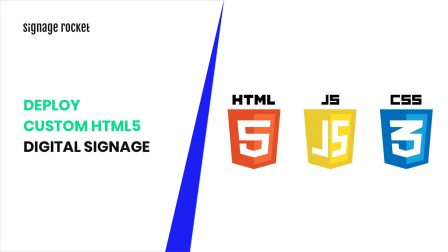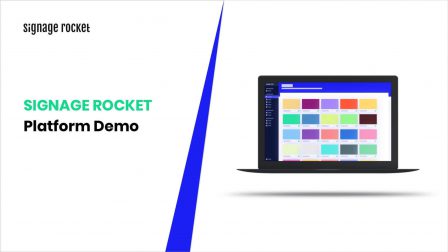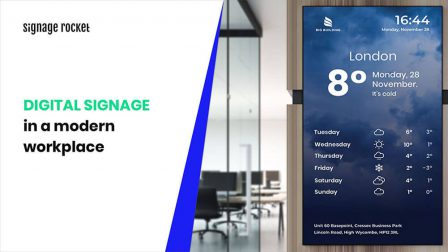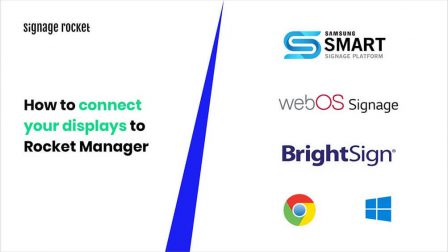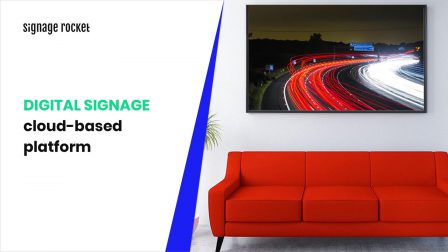A traditional digital signage installation normally involves a display & a separate media player connected to it to communicate with the server and play media content.
SoC stands for System on Chip. It’s a powerful multi-core processor mounted inside the enclosure of commercial-grade displays that replaces the traditional playback device and its cables.
System on Chip displays are getting extremely popular nowadays both for small and large digital signage deployments and are offered by market-leading display manufacturers (e.g. Samsung Smart Signage Platform, or LG webOS). SoC displays come all in different sizes, brightness levels, both can be used indoor and outdoor as well as they differ in operating hours. Usually, there are ranges of 16/7h to 24/7h models and this is very important to keep in mind if you want your digital signage network to work round the clock.
What are the benefits of SoC displays?
- First of all, it’s an ALL-IN-ONE digital signage solution. Therefore it’s a much sleeker and tidier installation: smaller footprint, no additional cables or metalwork, ultimately fewer points of failure.
- SoC displays are cost effective. Even though the cost of a professional SoC display can be higher than a standard screen, the overall cost of installation often turns out lower in comparison to the traditional setup:
- You don’t pay for a separate device
- The complexity of the whole installation is reduced
- Future maintenance is much easier
- Additionally, energy saving is a big factor. SoC displays of the market-leading manufactures are extremely energy efficient and you don’t have that additional hardware consuming extra power
- Some might argue that SoC displays might not be as powerful or reliable as a standalone media player. And it might be true when it comes to very first generations of SoC, dating back to around 2013. The newest generations of SoC displays however offer great performance and great quality. The latest displays have quad-core processors and run 4k content. They are also very reliable, they are made to last. The statistics show that the reliability of SoC in the market leading displays is really high and its failure rate is as low as < 0.5%.
Running digital signage on SoC displays is a time saver – all you need is a SOC display + Internet + software of your choice that runs on those displays e.g. Signage Rocket, a cloud based digital signage platform. You can control the display remotely, change its brightness, put it to sleep to save energy. On top of that, you get access to real-time monitoring: temperature, ram, CPU usage and you can remotely update the software so you’re always running the latest version.
Why is System on Chip the future of digital signage?
System on Chip is all about web technologies. A browser is becoming a universal platform and the languages of the browser are becoming dominant. Also, most new software is written primarily for browser use. Furthermore, the hardware is becoming smaller and smaller, and yet much faster. System on Chip: small in size, big on power!


 Contact
Contact